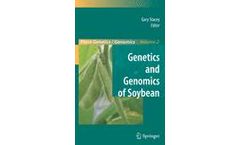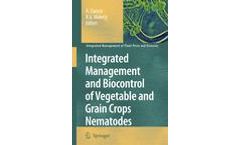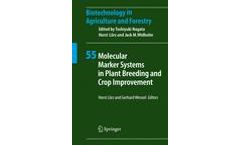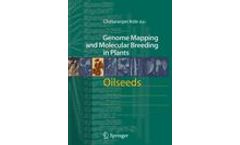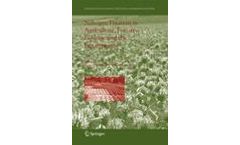Refine by
soybeans books
9 books found
The complete sourcebook for soybean information, this monograph combines concise information and the scope of a monograph. Topics include morphology, production, disease, management, genomics and genetic improvement, economics and marketing, processing and use, and even the role of soybean in human health. Soybean is a global crop and the ...
The Fabaceae (leguminosae) comprise the second largest family of flowering plants with 650 genera and 18000 species. The soybean is a member of the tribe Phaseoleae, the most economically important of the legume tribes. The soybean, Glycine max (L.) Merr. is the major source of vegetable oil and protein on earth. Soybean oil has garnered ...
This text and reference discusses the drying of grains, in particular the staple cereals, maize, rice, and wheat, and the oilseeds, soybeans and canola. The basic physical and thermodynamic properties of grain and air are examined, and the theory of the drying process is developed. ...
Readers will discover root-soil interactions and how to use them to manage the quality and productivity of our soils. Ranging from those identifiable from a moving vehicle, to those only elucidated with powerful molecular tools, the rhizosphere is examined by 28 authors in three sections: Macro-scale-- Learn the four classes of root that deal with soil spatial and temporal variability. ...
The second volume of the IMPD series describes aspects related to most important phytoparasitic nematodes, considering the integration of biological control methods with other management practices and technologies, including the use of predatory nematodes and microbial rhizosphere antogonists. Chapters cover topics such as the mode of action and interactions of nematophagous fungi, the efficacy ...
Successful release of new and better crop varieties increasingly requires genomics and molecular biology. This volume presents basic information on plant molecular marker techniques from marker location up to gene cloning. The text includes a description of technical approaches in genome analysis such as comparison of marker systems, positional cloning, and array techniques in 19 crop plants. A ...
With limited water resources to divert for agriculture, innovations aimed at increasing efficient use of irrigation water must be developed. Among the means to survive the consequences of water scarcity and yet to sustain high crop production under irrigated agriculture with decreasing share of water, deficient irrigation programs are highly valued and their adoption is widely promoted. ...
Genome Mapping and Molecular Breeding in Plants presents the current status of the elucidation and improvement of plant genomes of economic interest. The focus is on genetic and physical mapping, positioning, cloning, monitoring of desirable genes by molecular breeding and the most recent advances in genomics. The series comprises seven volumes: Cereals and Millets; Oilseeds; Pulses, Sugar and ...
This book is the self-contained fourth volume of a seven-volume comprehensive series on nitrogen fixation. The outstanding aspect of this book is the integration of basic and applied work on biological nitrogen fixation in the fields of agriculture, forestry, and ecology in general. Nowadays, the concept of sustainability, which originated in agriculture and land use, is reaching many other areas ...


